 |
|
1 Passband response reference is the output
amplitude of a sinusoidal signal at the record level set frequency recorded
at standard record level. The record level set frequency is 10 percent of
the upper band edge frequency (0.1 UBE) 2 When setting record bias level, a UBE frequency input signal is employed. The signal input level is set 5 to 6 dB below standard record level to avoid saturation effects which could result in erroneous bias level settings. The record bias current is adjusted for maximum reproduce output level and then increased until the output level decreases by the number of dB indicated in the table (see paragraph 4.1.3.3 of volume III,RCC document 118). |
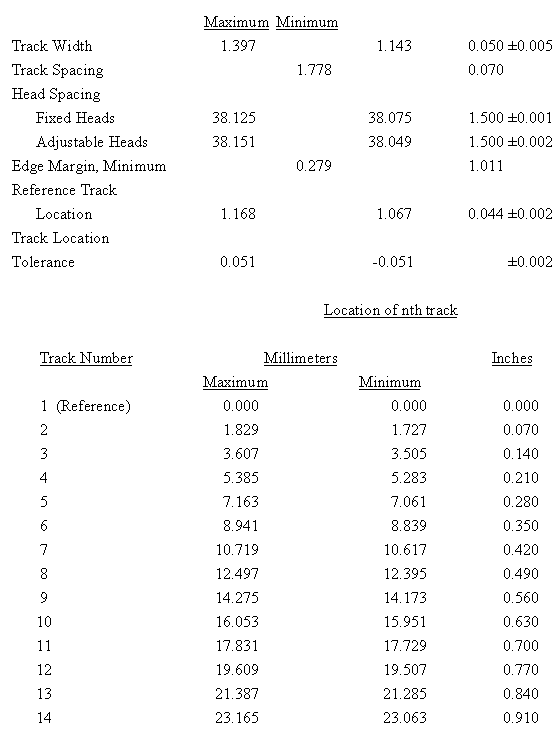 |
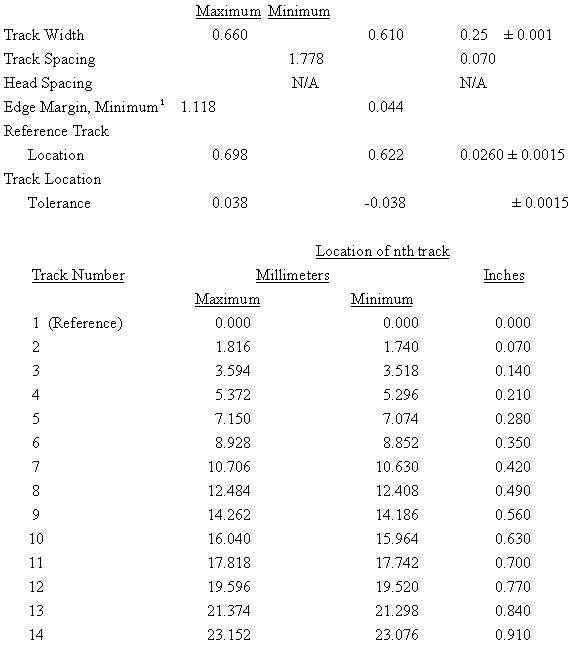 |
| 1 Track location and spacing are the same as the odd tracks of the 28-track interlaced format (see table 6-4). Edge margin for track 1 is only 0.229 mm (0.009 in.). |
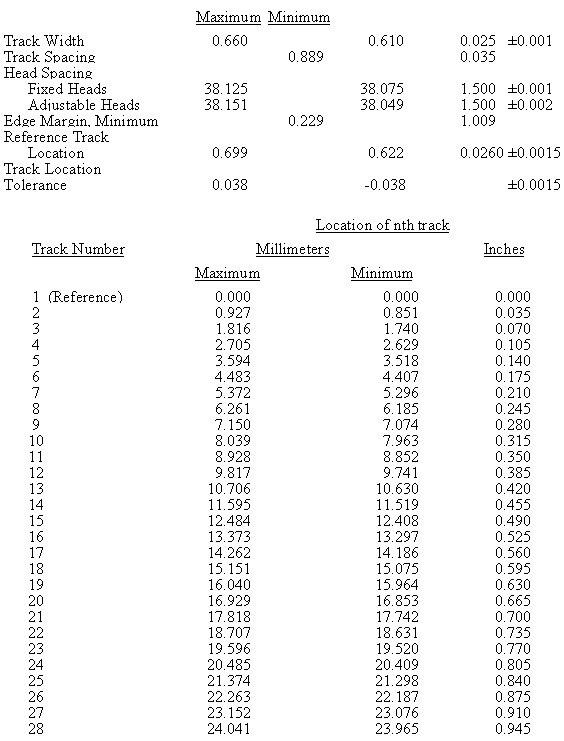 |
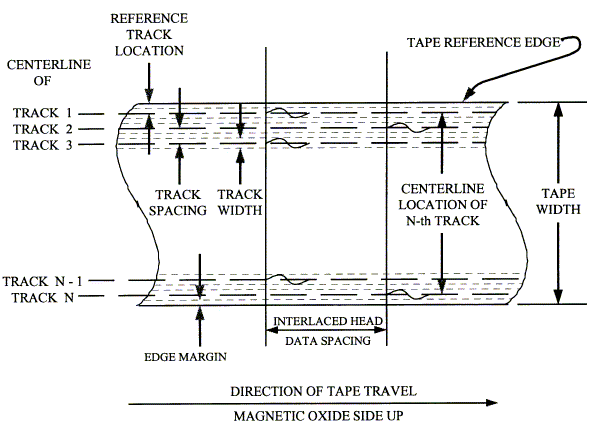 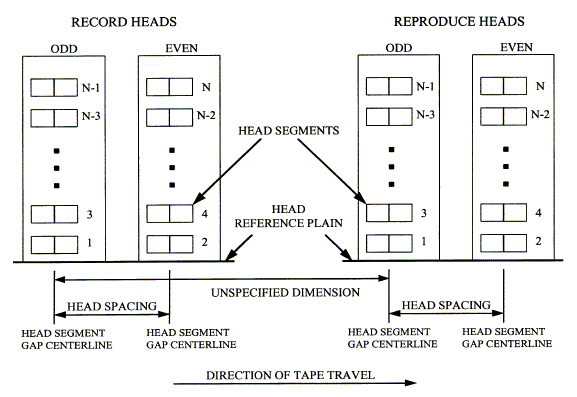 location (N-track interlaced system). 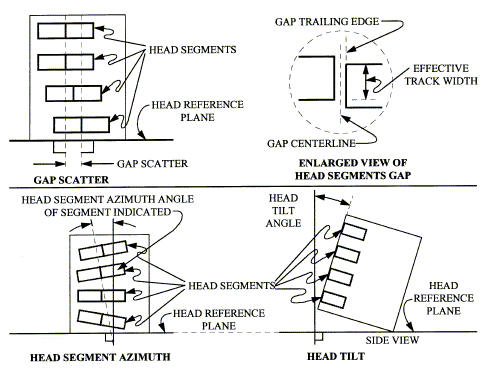  6.4.2 Track Numbering. The tracks on a tape are numbered consecutively from track 1 through track n with track 1 located nearest the tape reference edge as shown in figure 6-1. 6.4.3 Data Spacing. For interlaced formats, the spacing on tape between simultaneous events on odd and even tracks is nominally 38.1 mm (1.5 in.) (see paragraph 6.4.4.1). 6.4.4 Head Placement. The standard technique for wide band and 28-track double density is to interlace the heads, both the record and the reproduce, and to provide alternate tracks in separate heads. Thus, to record on all tracks of a standard width tape, two interlaced record heads are used; to reproduce all tracks of a standard width tape, two interlaced reproduce heads are used. For 14-track double density, the standard technique uses one in-line record head and one in-line reproduce head. 6.4.4.1 Head Placement, Interlaced. Two heads comprise the record-head pair or the reproduce-head pair. Mounting of either head pair is done in such a manner that the center lines drawn through the head gaps are parallel and spaced 38.10 mm ±0.05 (1.500 in. ±0.002) apart, as shown in tables 6-2 and 6-4, for systems that include head azimuth adjustment. The dimension between gap centerlines includes the maximum azimuth adjustment required to meet system performance requirements. For systems with fixed heads, that is, heads without an azimuth adjustment, the spacing between gap center lines shall be 38.10 mm ±0.03 (1.500 in. ±0.001) (see figure 6-2). 6.4.4.2 Head Identification and Location. A head segment is numbered to correspond to the track number that segment records or reproduces. Tracks 1, 3, 5, . . . are referred to as the "odd" head segments. Tracks 2, 4, 6, . . . are referred to as the even head segments. For interlaced heads, the head containing the odd numbered segments (odd head) is the first head in a pair.of heads (record or reproduce) over which an element of tape passes when moving in the forward record or reproduce direction (see figure 6-2). 6.4.4.3 In-Line Head Placement. An in-line head shall occupy the position of head number 1 in an interlaced system. 6.4.4.4 Head Segment Location. Any head segment within a head shall be located within ±0.05 mm (±0.002 in.) of the nominal (dimension from table without tolerances) position required to match the track location as shown in figure 6-1 and tables 6-2 through 6-4. |